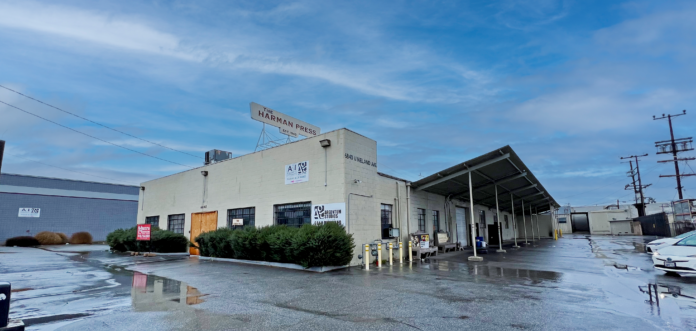The North Los Angeles office market continued to see a rise in vacancies during the first quarter, although many submarkets were still below the 22.5% average of Los Angeles County, according to Colliers data.
The San Fernando Valley had a 19.3% vacancy rate during the quarter. In the Tri Cities, meanwhile, Glendale skewed high at 25.5%, up year over year from 23.8% while Burbank, which for many quarters had the lowest vacancy rate in North Los Angeles, saw a 15.9% vacancy rate; a dramatic rise from the 8.2% rate seen this time last year.
Santa Clarita had a 20.4% vacancy rate, relatively flat quarter over quarter.
David Solomon of Colliers said the overall high numbers are a reflection of an inconsistent return to office by companies.
“On any given day, not everyone is being required to be there, (so) you don’t need as much space,” Solomon said. “There’s still so much uncertainty because a lot of employers aren’t sure what the right head count’s going to be, is it going to change in six months or nine months?”
Solomon said the situation is not a surprise to anyone in the industry.
“There’s still uncertainty and I think it’s going to swing back but it’s got to get worse before it gets better,” Solomon said.
Another factor may be a looming economic downtown.
“People are always worried about if we are dipping into a recession,” Solomon said. “Can we afford to have as much office space? When you sign an office lease, you’re committed for that lease term.”
Solomon said a tenant can mitigate having extra space by subleasing.
“But that’s difficult to do,” Solomon said. “Nobody wants to lease more space than they’re going to need. That’s a pretty poor decision.”
Asking rents in the San Fernando Valley during the first quarter were $2.65 a square foot, down 2 cents year over year.
“Rents are generally pretty flat,” Solomon said. “I don’t think they’ve gone down much in the last quarter. With very few exceptions, you wouldn’t expect to see rent growth in general.”
Challenges ahead
Beyond an uncertain return to office, there are a few other issues property owners are dealing with now.
“The other big challenge that is ahead for office buildings in general is the debt situation and what’s happened in the debt markets,” Solomon said. “With interest rates increasing so much over the last several months, even an asset that’s performing well, if their loan expires, the interest rate on their new loan is going to be higher.”
Solomon explained that building landlords routinely spend multiples of a tenant’s rent on tenant improvements before a company moves in and it usually takes years until the landlord recoups that money. That might be slowing down as owners contemplate selling their properties.
“If you think you’re might not own this building in a year, you’re not going to spend money you won’t get back for three years,” Solomon said.
On the other hand, there are buildings that are owned without debt. Those owners are going to be in a better position to make deals, Solomon said.
And there are buildings that refinanced before the pandemic.
“They have five, seven, 10 years not to have to worry about it so they’re going to keep their occupancy. So the better capitalized buildings without debt are more likely to perform better.”
Overall, Solomon expects more turbulence to affect the office market but he believes there will eventually be an increase in office demand.
Industrial insight
During the first quarter, the industrial sector continued to see a tight market with ultra-low vacancies under 1% in most markets.
The San Fernando Valley saw a vacancy rate of 0.6%, according to Colliers data.
The area had 1.4 million square feet of new industrial product under construction during the quarter. The lack of construction relative to demand has kept industrial rates high. Weighted asking rents reached $1.66 in the Valley, up 23 cents over the previous year.
David Harding of Colliers sees an overall healthy industrial market.
“The vacancies spiked a little bit but not a lot,” Harding said. “We’re still seeing a very strong industrial market. The activity is a little bit lighter than it was last year. It’s not quite as strong on the leasing front. But still strong enough to keep these vacancy rates low.”
Despite an increase in interest rates, Harding said he was still “seeing decent owner/user activity.”
The capital market side has slowed down but there are still deals unfolding. Harding was directly involved in a few transactions during the first quarter.
He transacted the property at 6840 Vineland Ave. in North Hollywood, a 23,100-square-foot building purchased by an entertainment company for $7.5 million. He also brokered a deal at 11660 Tuxford St. in Sun Valley, a 7-acre site purchased by Epicenter Land Corp. in January for $40 million.
On the leasing side, Harding oversaw entertainment company Kinetic Lighting sign a deal for 61,200 square feet at 5435 W. San Fernando Road in San Fernando.
